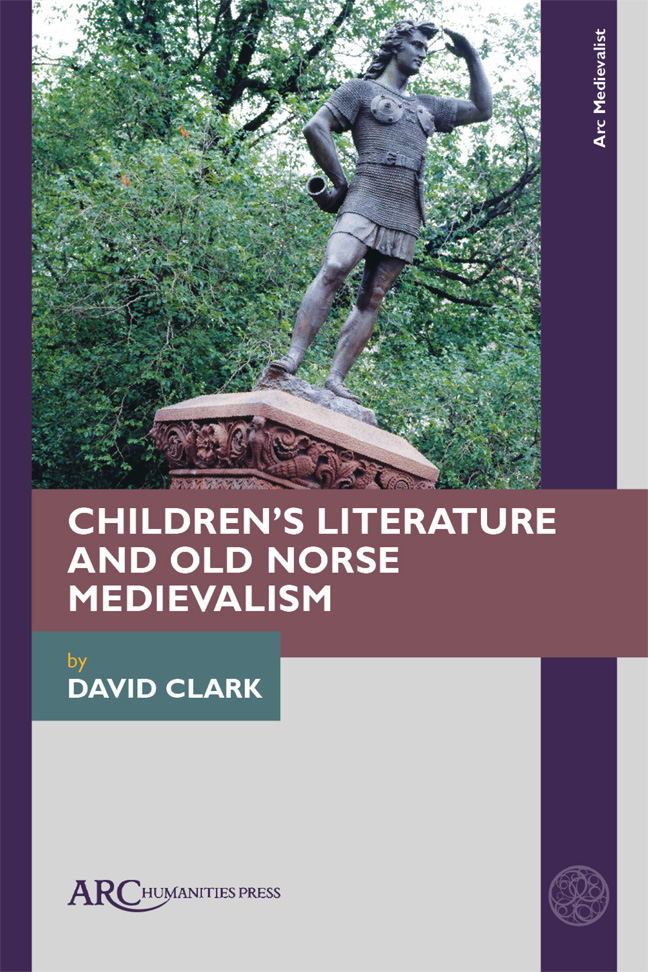Book contents
- Frontmatter
- Contents
- Acknowledgements
- Dedication
- Introduction: The End
- 1 Age-Related Categories
- 2 Generic Categories
- 3 Transformational Fantasy
- 4 Horned Helmets and Comic Anachronism
- 5 Viking Reputation
- 6 Runes and Magic
- 7 The Power of Story
- 8 Race and Ethnicity
- 9 Heroism
- 10 Viking Masculinity
- 11 Viking Femininity
- 12 Viking Sex and Gender
- 13 Bowdlerization
- 14 Sexuality
- 15 Ecological Threat
- 16 Norse Medievalism in Alan Early's Father of Lies Trilogy
- 17 Avoiding the End of Days: K. L. Armstrong and M. A. Marr's Blackwell Pages
- 18 Rick Riordan's Magnus Chase Series and Norse Medievalism
- Conclusion
- Select Bibliography of Frequently Cited Works
- Index
10 - Viking Masculinity
Published online by Cambridge University Press: 17 February 2024
- Frontmatter
- Contents
- Acknowledgements
- Dedication
- Introduction: The End
- 1 Age-Related Categories
- 2 Generic Categories
- 3 Transformational Fantasy
- 4 Horned Helmets and Comic Anachronism
- 5 Viking Reputation
- 6 Runes and Magic
- 7 The Power of Story
- 8 Race and Ethnicity
- 9 Heroism
- 10 Viking Masculinity
- 11 Viking Femininity
- 12 Viking Sex and Gender
- 13 Bowdlerization
- 14 Sexuality
- 15 Ecological Threat
- 16 Norse Medievalism in Alan Early's Father of Lies Trilogy
- 17 Avoiding the End of Days: K. L. Armstrong and M. A. Marr's Blackwell Pages
- 18 Rick Riordan's Magnus Chase Series and Norse Medievalism
- Conclusion
- Select Bibliography of Frequently Cited Works
- Index
Summary
THE POPULAR IMAGE of the Viking from the Victorian period on was predomi-nantly a hypermasculine one, built on aggression, skill with weapons, and an uncom-promising ruggedness. More recently, medievalist writers have begun to explore Viking femininities, as we shall see, and Norse medievalist novels for children and young adults embrace a variety of gender dynamics. Nonetheless, ideas of hegemonic masculinity and essentializing perceptions of “boy readers” continue to dominate the parts of the pub-lishing industry and parenting forums, resting on the conviction that “boys don't read books about girls”: a blanket statement in which statistical averages on reading patterns and literacy rates for boys in certain nations are explicable in terms of an essentialized gender binary. Boys who do not fit this perception tend to be ignored, along with the existence of non-binary children, and tremendous efforts may be made to persuade “normal” (but book-shy) boys to read, rather than to challenge the dominant construc-tions of gender that children encounter from birth which underlie and perpetuate the phenomenon. It remains true, of course, that many girls (and women in general) are wellpractised at crossidentifying with male protagonists, just as queer readers and viewers are used to cross-identifying with heteronormative perspectives.
Violent Viking masculinities are a prominent feature of many medievalist works, but they are not homogeneous: the hegemonic image of the ferocious male warrior may be accepted as historical fact, explicitly subverted, or explored in more nuanced ways.
Several longer narratives take a straightforward hegemonic view of Norse masculinity. Judson Roberts's Strongbow Saga series (2006–08), as Tison Pugh and Jane E. Weisl show, explores the fourteen-year-old Viking protagonist Halfdan's journey to heroic status and the recovery of his heritage via warrior prowess. This masculinist process involves the formation of bonds of homosocial loyalty and privileges physical strength; violence is a useful strategy and the endurance of suffering is part of what it means to be a man. The Strongbow novels in this way recall the constructions of masculinity in advertisements for the contemporary Armed Forces. They include historical figures such as Ragnar Lothbrok, Ivar the Boneless, and Charles the Bald, and Roberts's website contains pages of information aimed at schools on “Viking History.” However, his account of the “Age of the Vikings” focuses almost exclusively on raiding, warfare, and conquest.
- Type
- Chapter
- Information
- Children's Literature and Old Norse Medievalism , pp. 91 - 96Publisher: Amsterdam University PressPrint publication year: 2023

